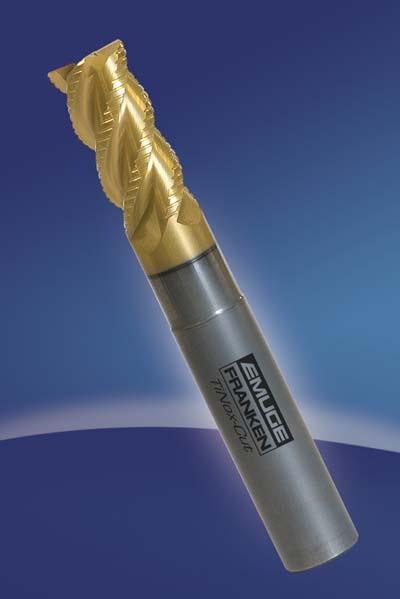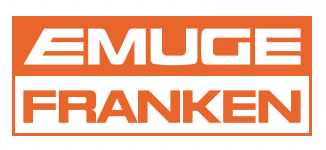
Emuge Corp. announced the introduction of TiNox-Cut, a new series of end mills specifically developed to provide exceptional tool life when machining challenging materials. New Emuge TiNox-Cut end mills offer a dependable cutting solution for nickel alloys like Inconel and Stellite, all grades of titanium, and tough stainless steels like Super Duplex — materials used extensively in the aerospace, power generation, medical, chemical and food industries, among others. The demand for parts and components machined from these materials is on the rise, but the same special properties, like high heat, chemical and abrasion resistance, that make these materials desirable for use in extreme-service applications, also make them difficult to machine," said Mr. Stephen Jean, Milling Products Manager, Emuge. "Typically, these materials burn up cutting tools." The new TiNox-Cut End Mills feature a high heat-resistant, lubricious coating and an optimized cutting edge design. This provides long tool life by minimizing friction and efficiently evacuating chips, which is especially important in tough, long-chipping materials. In addition, the tools are made from an extra-tough carbide grade to maximize wear resistance. For maximum effective cutting lengths, TiNox-Cut End Mills feature reduced neck diameters. The new end mills combine a tight, h5 shank tolerance with a specially roughened surface finish to maximize tool holder clamping potential. The TiNox-Cut End Mills are well suited for both roughing and finishing operations. The tools consist of three designs: two 4-flute variations for both roughing and finishing, and a 5-flute extra long finishing tool. TiNox-Cut roughing/finishing end mills are available with flat ends or with a selection of corner radii. For even more efficient chip evacuation, TiNox 4-flute end mills are available with internal coolant/lubricant capability. The roughing/finishing versions are available with a serrated profile for effective chip breaking during roughing operations. The 5-flute TiNox-Cut finishing end mills are also available with various corner radii, and feature length-to-cutting diameter ratios of 3 times D and 4 times D. The 5-flute design offers added stability and minimal deflection in long reach applications. Emuge TiNox-Cut End Mills range in diameter from 6mm to 20mm, depending on the design.
Contact Details
Related Glossary Terms
- alloys
alloys
Substances having metallic properties and being composed of two or more chemical elements of which at least one is a metal.
- finishing tool
finishing tool
Tool, belt, wheel or other cutting implement that completes the final, precision machining step/cut on a workpiece. Often takes the form of a grinding, honing, lapping or polishing tool. See roughing cutter.
- flat ( screw flat)
flat ( screw flat)
Flat surface machined into the shank of a cutting tool for enhanced holding of the tool.
- gang cutting ( milling)
gang cutting ( milling)
Machining with several cutters mounted on a single arbor, generally for simultaneous cutting.
- milling
milling
Machining operation in which metal or other material is removed by applying power to a rotating cutter. In vertical milling, the cutting tool is mounted vertically on the spindle. In horizontal milling, the cutting tool is mounted horizontally, either directly on the spindle or on an arbor. Horizontal milling is further broken down into conventional milling, where the cutter rotates opposite the direction of feed, or “up” into the workpiece; and climb milling, where the cutter rotates in the direction of feed, or “down” into the workpiece. Milling operations include plane or surface milling, endmilling, facemilling, angle milling, form milling and profiling.
- shank
shank
Main body of a tool; the portion of a drill or similar end-held tool that fits into a collet, chuck or similar mounting device.
- stainless steels
stainless steels
Stainless steels possess high strength, heat resistance, excellent workability and erosion resistance. Four general classes have been developed to cover a range of mechanical and physical properties for particular applications. The four classes are: the austenitic types of the chromium-nickel-manganese 200 series and the chromium-nickel 300 series; the martensitic types of the chromium, hardenable 400 series; the chromium, nonhardenable 400-series ferritic types; and the precipitation-hardening type of chromium-nickel alloys with additional elements that are hardenable by solution treating and aging.
- tolerance
tolerance
Minimum and maximum amount a workpiece dimension is allowed to vary from a set standard and still be acceptable.
- wear resistance
wear resistance
Ability of the tool to withstand stresses that cause it to wear during cutting; an attribute linked to alloy composition, base material, thermal conditions, type of tooling and operation and other variables.

